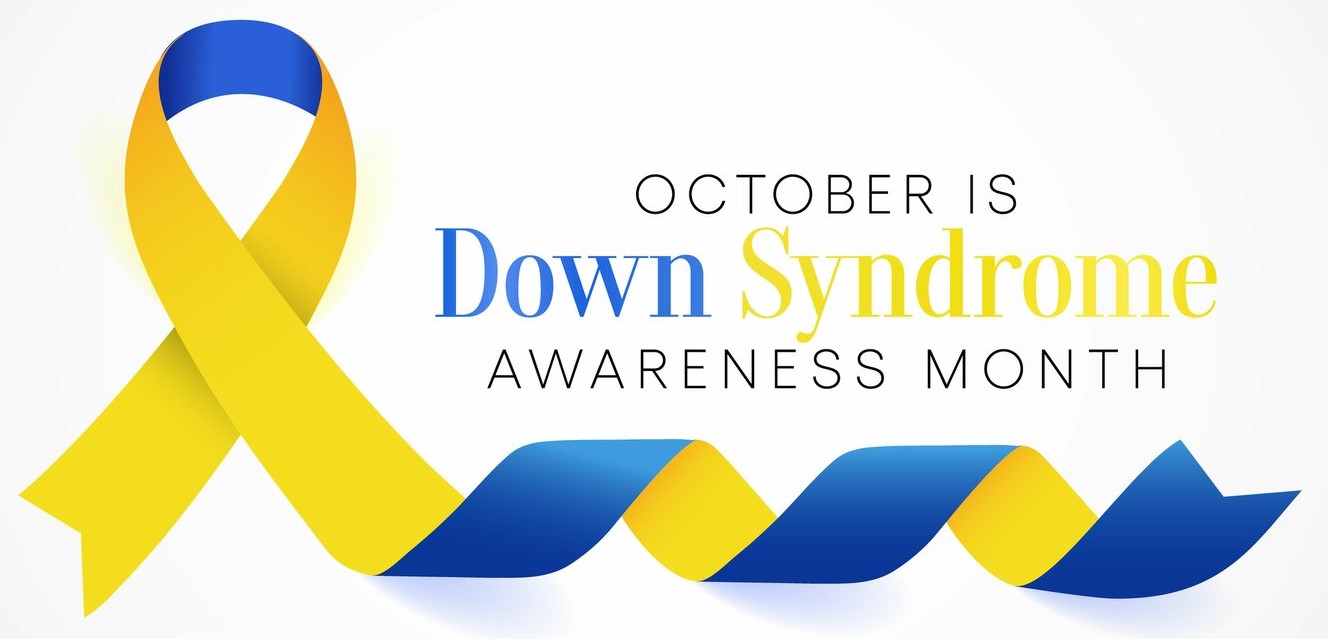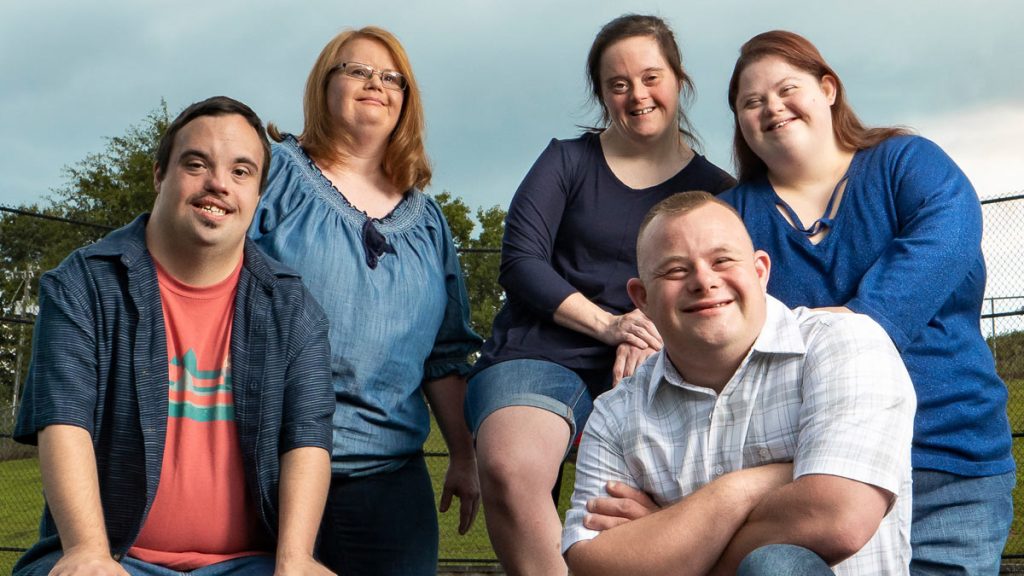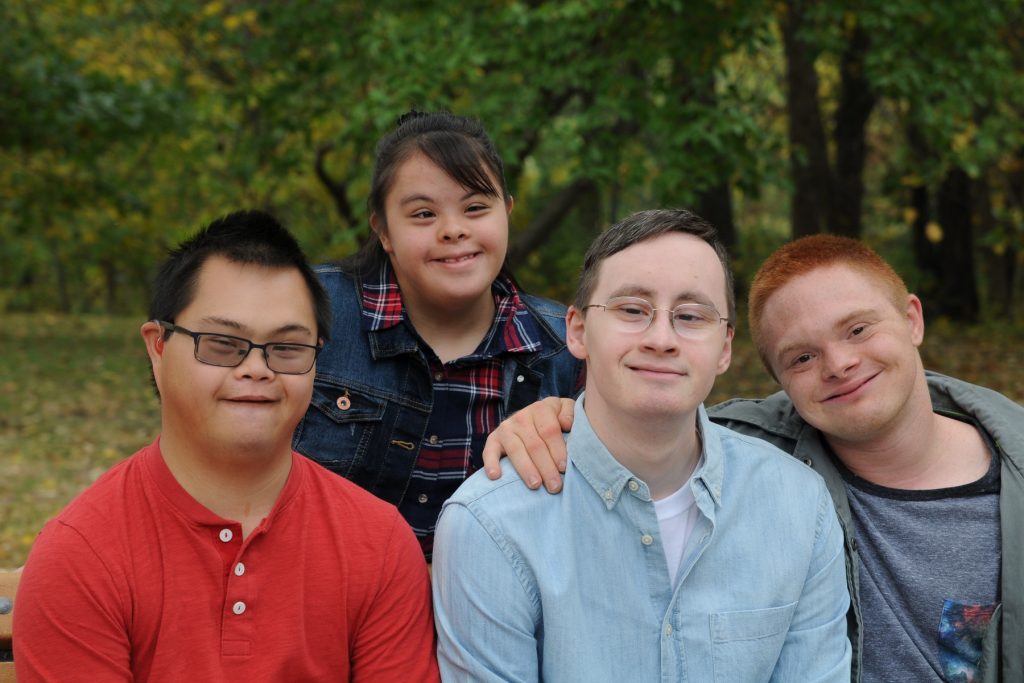
“Down Syndrome Awareness Month in October is the perfect time to learn more about the most common chromosomal condition in the United States. About 5,700 babies are born and diagnosed with Down syndrome in the U.S. each year, according to the Centers for Disease Control and Prevention.” [1]
October was first designated as National Down Syndrome Awareness Month in the 1980s and has been recognized every October since. “It is a time to celebrate people with Down syndrome and make others aware of their abilities and accomplishments.” [2]
“Down syndrome is a condition in which a person has an extra copy of chromosome 21. Chromosomes are small “packages” of genes in the body’s cells, which determine how the body forms and functions.
When babies are growing, the extra chromosome changes how their body and brain develop. This can cause both physical and mental challenges.

People with Down syndrome often have developmental challenges, such as being slower to learn to speak than other children.
Distinct physical signs of Down syndrome are usually present at birth and become more apparent as the baby grows.” [3]
“The physical symptoms of Down syndrome vary from person to person, but they commonly include:
- A flattened facial profile, especially the bridge of the nose.
- A short neck, with excess skin at the back of the neck.
- Small head, ears and mouth.
- Decreased or poor muscle tone or loose joints.
- Almond-shaped, upward-slanting eyes, often with a skin fold that comes out from the upper eyelid and covers the inner corner of the eye.
- A single crease across the palm of the hand.
- A deep groove between the first and second toes.
Down syndrome can also cause intellectual and developmental symptoms that lead to cognitive impairment, which means challenges with thinking and learning. Like the physical symptoms, they vary and usually range from mild to moderate. Some common cognitive problems include:
- Short attention span
- Poor judgment
- Impulsive behavior
- Slow learning” [4]
“In recent decades, thanks to appropriate support and treatment, life expectancy for people with Down syndrome has increased dramatically: from 25 years in 1983 to more than 60 years today.” [2]

How is Down syndrome diagnosed and treated?
“Health care providers can check for Down syndrome during pregnancy or after a child is born. There are two types of tests for Down syndrome during pregnancy: A prenatal screening tests and a prenatal diagnostic test.
The American Congress of Obstetricians and Gynecologists (ACOG) recommends that all pregnant women be offered a Down syndrome screening test.” [5]
There’s no specific treatment for Down syndrome. But there is a wide range of physical and developmental therapies designed to help people with Down syndrome reach their full potential.
The earlier you start treatment, the better. Children with Down syndrome can usually hit the same milestones as other children but at later stages. So, therapy is key to help children with the disorder meet those milestones.
Each child will have different needs. Yours may benefit from:
- Physical, occupational, and speech therapy. Physical and speech therapists can help your child with sitting and walking properly, developing speech, and learning to communicate. Occupational therapists teach everyday skills like how to get dressed, eat, or use a computer.
- Behavioral counseling. Children with Down syndrome may also have conditions like ADHD, autism, or compulsive behaviors that need to be addressed.
- Specialized education services. By law in the U.S., children with Down syndrome can get free educational services and devices to help with learning. This assistance lasts until age 21 or when they finish high school, whichever comes first.
- Social and recreation activities
- Programs that offer job training and teach self-care skills

“People with Down syndrome still face stereotypes and myths, but they’ve shown time and again that the condition is just one part of who they are and doesn’t define them or limit their abilities. That’s why it’s so important that during National Down Syndrome Awareness Month and all year long, we help spread the message of love, acceptance, inclusion, and respect.” [2]
Resources
[1] https://www.hhs.texas.gov/news/2024/10/hhsc-observes-down-syndrome-awareness-month
[2] https://www.specialolympics.org/stories/news/national-down-syndrome-awareness-month
[3] https://www.cdc.gov/birth-defects/about/down-syndrome.html
[5] https://www.nichd.nih.gov/health/topics/down/conditioninfo/diagnosis
[6] https://www.webmd.com/children/understanding-down-syndrome-basics
